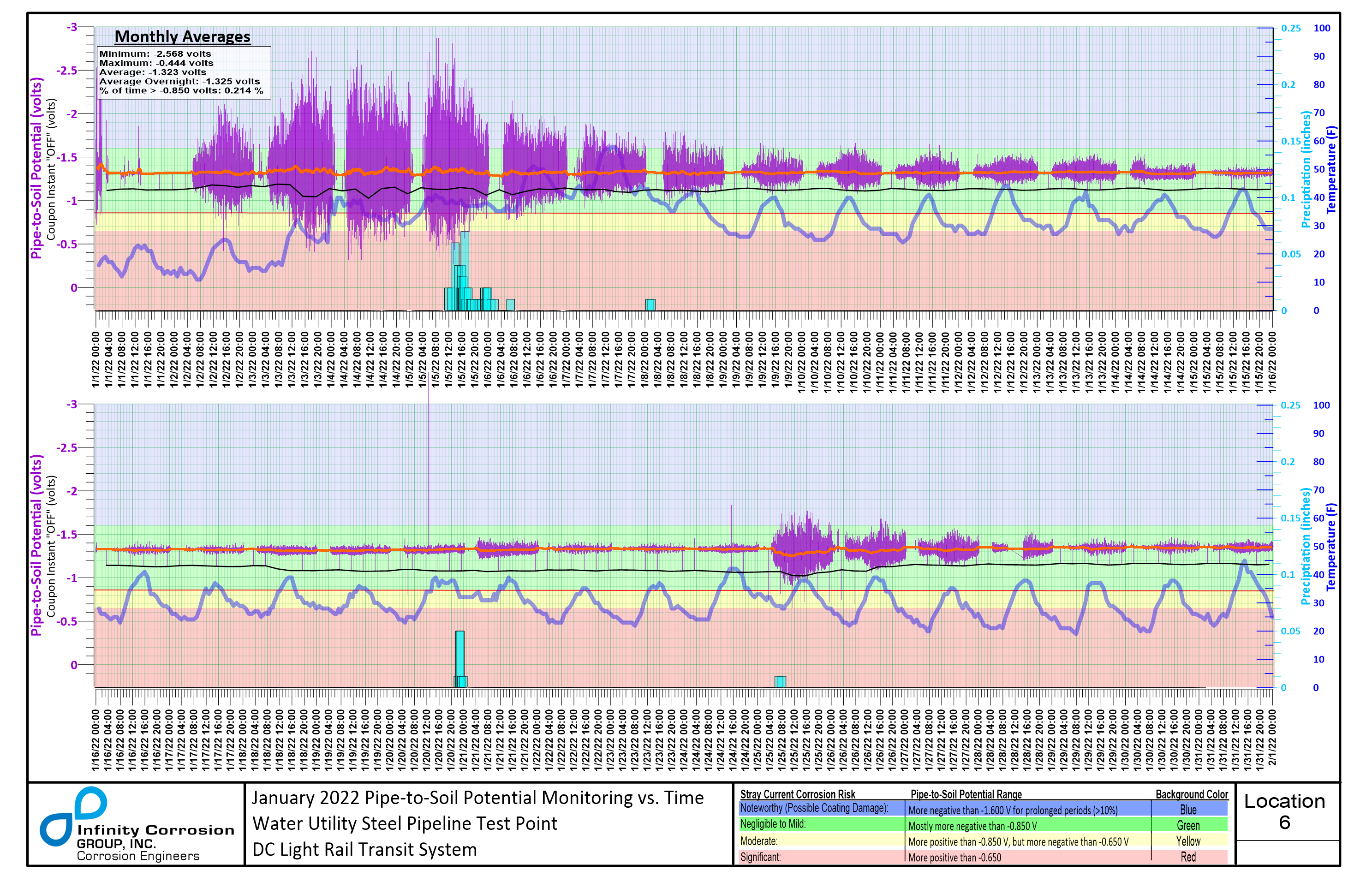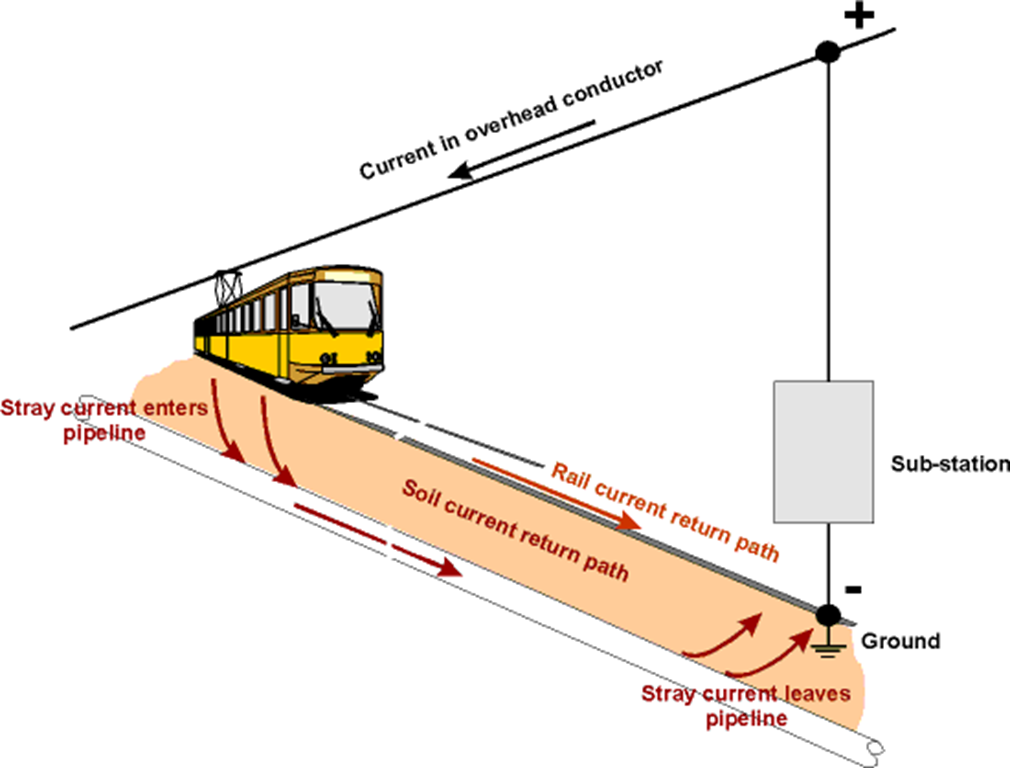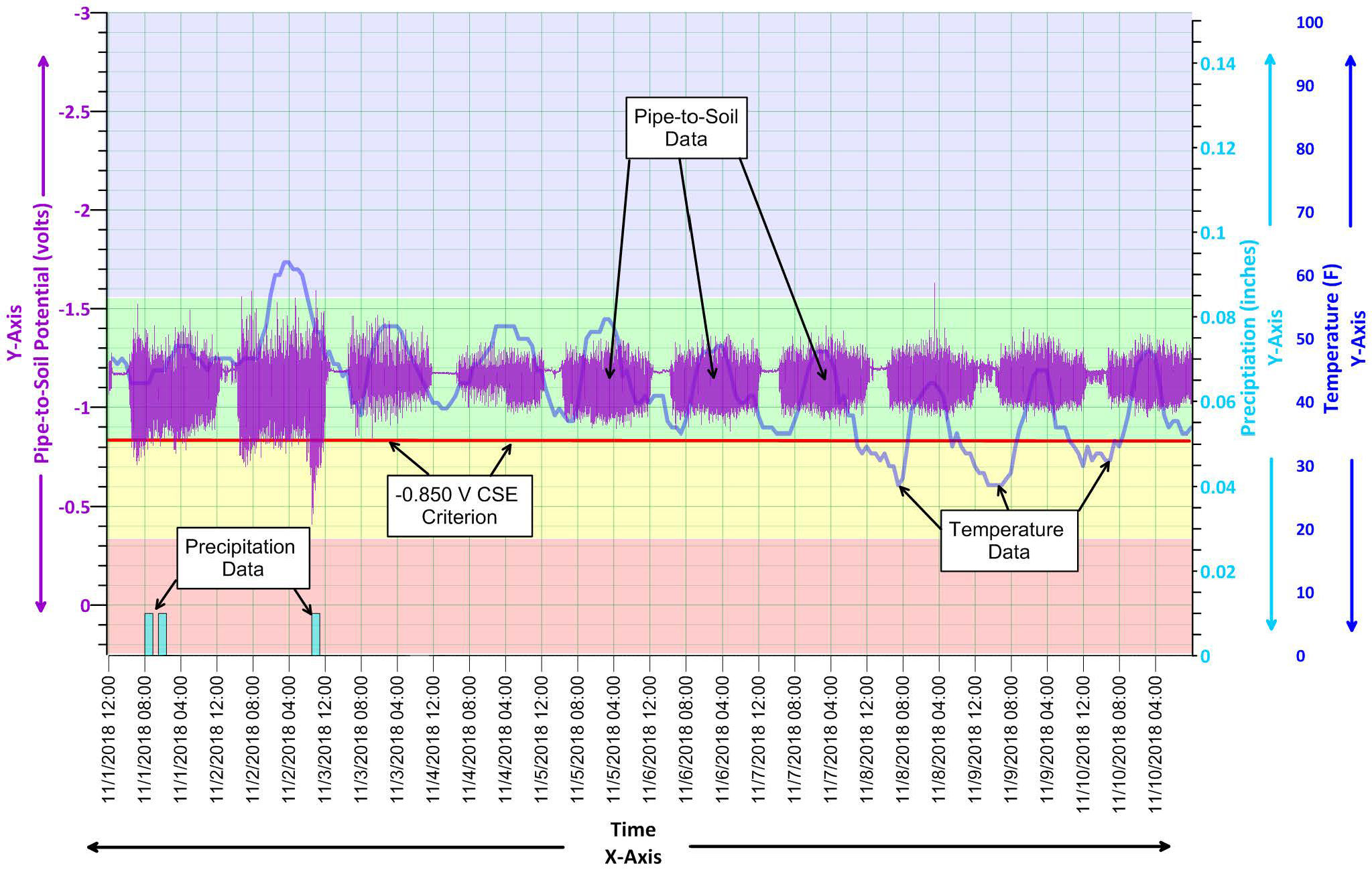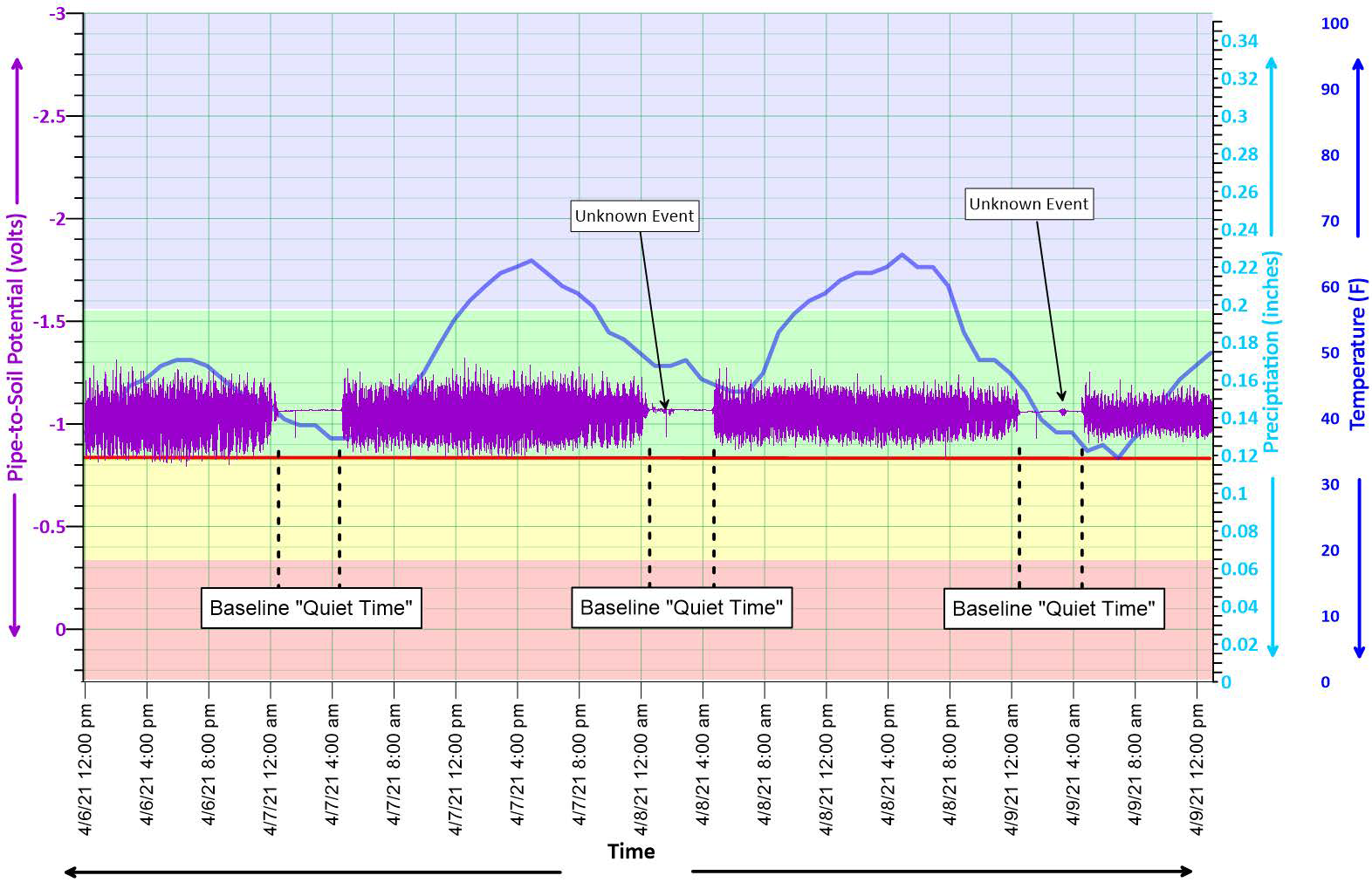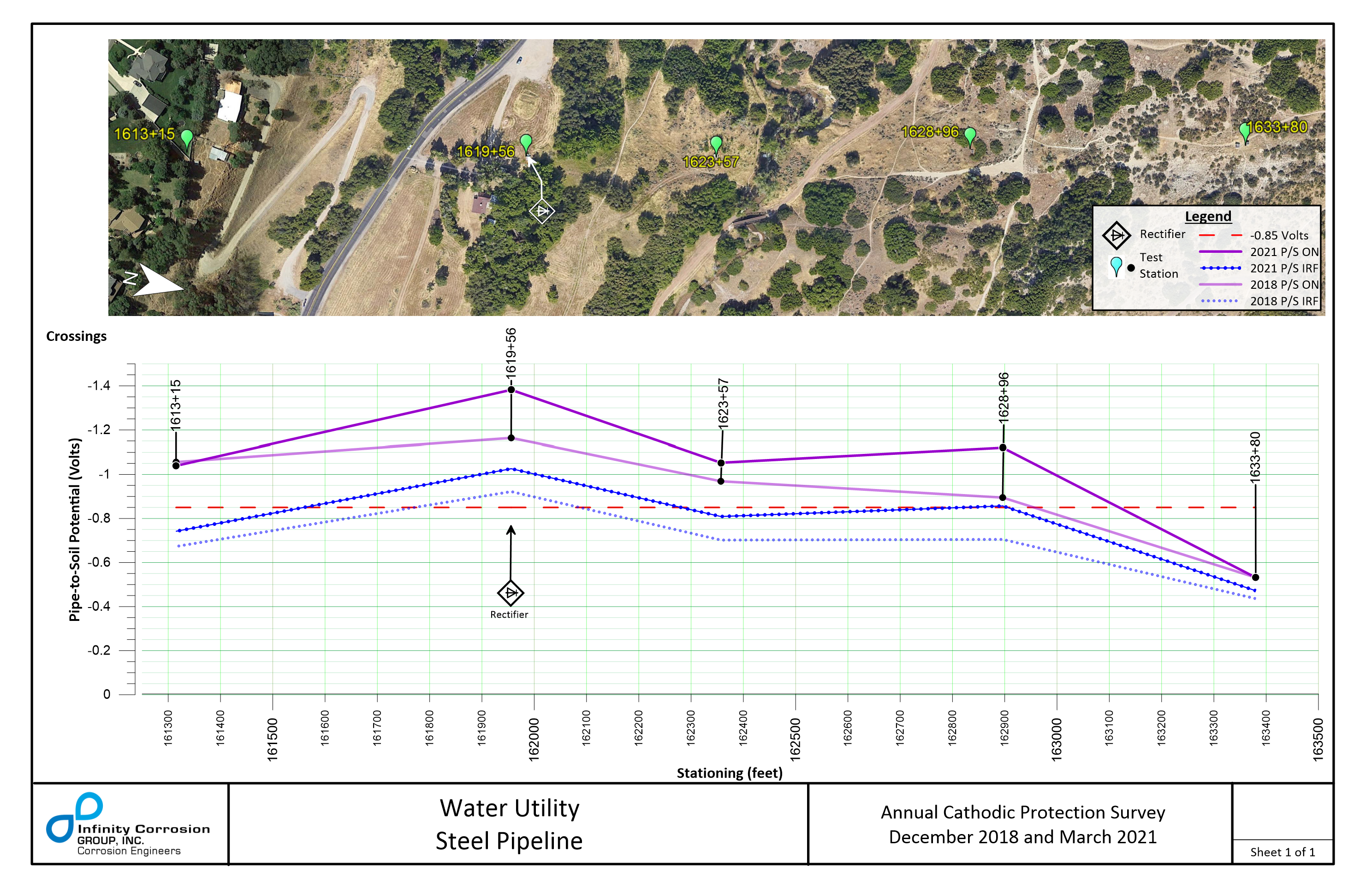Engineering Group Performs Long-term Corrosion Monitoring
Infinity Corrosion Group, Inc. (ICG) is an engineering firm providing corrosion control services in the American Mountain West. The firm works to develop innovative and effective corrosion control solutions for a variety of markets including water, energy, oil and gas, construction, industrial government, and public transportation services.
Corrosion control are the methods in which a system is monitored to identify corrosion, then maintained to reduce the effects of that corrosion. Corrosion leads to deterioration of material causing reduced water quality, facility damage, and even complete loss of facilities if not identified and addressed soon enough. Since ICG is trusted to protect their clients’ assets, they require a software solution with a high lifetime value, that can be utilized across multiple long-term monitoring projects.
So how does a firm such as Infinity Corrosion balance dozens of long-term monitoring projects across so many unique markets? They leverage Grapher’s analysis and visualization capabilities! By tracking key corrosion variables with Grapher, ICG is able to inform their clients on exactly where and how their key pipelines need addressing. Protecting the clients from a total pipe failure that may cost a fortune in time and money to remediate.
Monitoring Corrosion with Grapher
Zach Sharon is an Electrical/Corrosion Engineer at Infinity Corrosion, and he has incorporated Grapher into his workflows for monitoring utility sites on a long-term scale. By pulling thousands of data points from utility sites each month Zach is able to constantly update graphs tracking variables that aid in the identification of corrosion events. Once a plot has been formatted to display the key corrosion variables, effort can be focused on analysis. With more time dedicated to analysis, ICG and Zach can feel confident in providing informed advice on the actions clients and local utilities companies should take to protect and maintain their pipelines, before disaster strikes.
What is Stray Current?
Stray current is defined as the existence of electrical potential that can be found between objects which should not be subjected to voltage.
One of ICG’s projects involve working to prevent stray current corrosion caused by light rail transit systems. In 2010 a local gas utility company noticed during daily operations the light rail system was leaking stray current from the rails into the ground. This is problematic as current discharged into the ground flows along paths of lesser resistance. These paths of lesser resistance can be highly conductive (low resistivity) soils, or metallic conductors (such as pipelines and other metallic utilities). Should the stray current hop onto one of these utility pipelines acting as a conductor, it can continue traveling and eventually discharge from the conductor to the traction power substation (see figure below). Leading to metal loss and potentially pipe failure.
Once a stray current occurrence was identified the local gas utility and the light rail operator quickly formed a cooperative with the goal of creating a Long-term Data Logging Program. The programs’ goal is to identify and mitigate these stray currents. Ultimately, reducing corrosion on any pipelines within the vicinity of the rail lines.
Who better to bring in on a long-term corrosion control effort than Infinity Corrosion Group? In April, 2015 ICG joined this effort and since then has been monitoring dozens of at-risk utility sites due to their proximity to the light rail system. The sites are monitored by data loggers which continuously record pipe-to-soil potentials. By bringing this continuous data stream into Grapher, Zach can document patterns and changes in key variables that provide insight to the need and type of mitigation or remediation required at these sites along the light rail system.
One way Zach uses Grapher to document these changes is by plotting the pipe-to-soil potentials for each utilities test point. These plots are called Stray Current Plots and are used to simultaneously keep a historical record and monitor new stray current events. Grapher’s customization options provide Zach with the ability to utilize multiple axes and color schemes; ensuring his team can take one look at the plot and quickly determine when a new stray current event has occurred.
The below Stray Current Plot represents data collected in November of 2018. The Y-axis on the left denotes the pipe-to-soil potential voltage readings, and the X-axis represents the time in days. The four different background colors of blue, green, yellow, and red represent the different stray current corrosion risks. The two Y-axes on the right side of the plot correspond to the temperature and precipitation denoted by the darker blue line and light blue bars respectively.
Long-term Corrosion Monitoring Success
This long-term data logging with Grapher also allows ICG to define baseline “quiet times,” when the trains are not operating. These periods of “quiet time” give an indication of the cathodic protection level on the protected steel pipelines when unaffected by stray currents. In the plot below we can notice the pipe-to-soil potentials remain fairly unchanged throughout the “quiet time” period, but a few small unknown events can occur. When these unknown events pop up ICG can contact the light rail operator so they can conduct their own investigation.
A crucial aspect of any long-term monitoring effort is the ability to efficiently update your existing plots with newly collected data. Zach creates the plots above for 30 locations each month. A painstaking data sorting/loading process without utilizing Grapher’s automation features. By leveraging Scripter, he can quickly call the latest dataset from any of the monitoring locations, and the data will autofill in a Grapher Template File (GRT) of his required plot type. The script can even be written to include historical information such as a running average of the site voltage for comparison, generated by Grapher’s fit curve feature.
Pipe-to-Soil Potential Plots
ICG utilizes several other plot types in their monitoring efforts outside of the light rail system; one being Pipe-to-Soil potential plots. Pipe-to-soil potential plots are generated by data collected from Cathodic Protection Surveys. Cathodic Protection Surveys determine the level of corrosion protection a pipe has based on the change in pipe potential while the cathodic protection system is energized. By performing these surveys and collecting the pipe-to-soil potentials ICG is able to determine if pipelines are receiving adequate cathodic protection, and accordingly at a lower risk of corrosion.
Once the surveys are finished, Zach brings the data into Grapher to create overview plots that portray the pipe-to-soil potentials along specific pipelines. Satellite imagery is added above the graph to ensure clients understand exactly where the test stations and other associated pipeline facilities are located. Providing ICG with a graphic that has the context their clients need to fully understand reports.
In the graphs pictured the dark purple line represents the “ON” pipe-to-soil potential (volts), the dotted blue line represents the instant “OFF” or “Polarized” pipe-to-soil potential (volts), and the dashed red line denotes the -0.850 volt criterion the readings should be above to be considered protected by the lighter purple and dotted blue lines are historical data.
Infinity Corrosion Group’s goal is to provide their clients with practical and effective approaches for the preservation and maintenance of their assets. They offer dozens of specialized services which entail consistent data collection and the ability to display that data. Grapher gets them one step closer to achieving their goal by offering dynamic graphing options that can display all their valuable data in the same plot. Once a template has been set, Grapher’s built in workflows ensure a simple, efficient process to update these plots with the data their team works hard to collect for the rest of a project’s lifetime.
Golden Guarantee
100% Satisfaction Guaranteed or 100% of Your Money Back
We know Surfer and Grapher’s visualization capabilities will help you stand out from the crowd, WOW clients, and leave a lasting impression!
But… we realize you don’t know this yet. And you won’t until you experience our products for yourself.
This is why we provide this guarantee. This is the distillation of a 40+ year adventure designing, developing, and honing powerful visualization and analysis features as requested by scientists and engineers like you.
Our products can produce results far beyond its license fees. We are assuming all your risk, so you have none.
